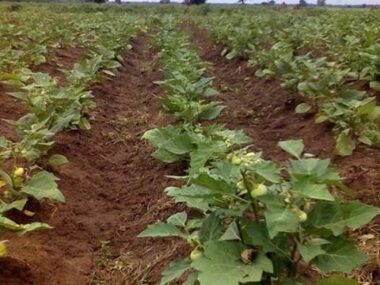Aquaponics is a groundbreaking method of sustainable agriculture that integrates fish farming with hydroponic plant growth. This innovative system creates a symbiotic relationship between aquatic animals and plants, resulting in a closed-loop ecosystem where waste from the fish nourishes the plants, and the plants, in turn, filter and purify the water for the fish. By harnessing the power of nature’s interconnectedness, aquaponics offers numerous benefits for both food production and environmental conservation.

At the heart of aquaponics lies the concept of synergy. Fish produce waste rich in nutrients, such as ammonia, which would be harmful if allowed to accumulate in their environment. However, in an aquaponic system, this waste becomes a valuable resource. The water containing fish waste is pumped into the hydroponic component of the system, where it serves as fertilizer for the plants. Microorganisms in the grow beds convert the ammonia into nitrates, which are then absorbed by the plants as essential nutrients. As the plants take up these nutrients, they help to purify the water, which is then recirculated back to the fish tanks, completing the cycle.
One of the key advantages of aquaponics is its efficiency in resource utilization. Traditional agriculture often requires significant inputs of water, fertilizers, and pesticides, which can have detrimental effects on the environment. In contrast, aquaponic systems use up to 90% less water than conventional farming methods because water is continuously recycled within the closed-loop system. Additionally, the need for synthetic fertilizers is eliminated, as the fish waste provides a natural and sustainable source of nutrients for the plants. This makes aquaponics an ideal solution for regions facing water scarcity or limited access to arable land.
Moreover, aquaponics offers a versatile approach to food production, allowing for the cultivation of a wide variety of crops alongside fish farming. Leafy greens, herbs, tomatoes, cucumbers, and even strawberries thrive in aquaponic systems, making it possible to grow a diverse range of fresh produce year-round. This flexibility enables farmers to cater to local demand and adapt their cultivation practices to changing market trends. Furthermore, aquaponic farms can be established in urban areas, reducing the need for long-distance transportation and minimizing the carbon footprint associated with food distribution.
Another significant advantage of aquaponics is its scalability. Whether you’re a small-scale hobbyist or a commercial farmer, aquaponic systems can be tailored to suit your needs and available space. From compact backyard setups to large-scale commercial operations, the principles of aquaponics remain the same, offering scalability without sacrificing efficiency. This scalability also extends to the variety of fish that can be raised in aquaponic systems, with tilapia, trout, catfish, and carp being popular choices due to their adaptability to aquaculture conditions.
In addition to its economic and environmental benefits, aquaponics has the potential to address food security issues by providing a reliable source of nutritious food. With the world’s population expected to reach 9.7 billion by 2050, there is growing pressure on global food systems to meet the demand for food while minimizing negative impacts on the environment. Aquaponics offers a sustainable solution to this challenge by producing food locally, reducing dependency on imports, and conserving natural resources.
Furthermore, aquaponics can play a vital role in education and community development. By introducing aquaponic systems into schools and community centers, individuals of all ages can learn about the principles of ecology, biology, and sustainable agriculture in a hands-on manner. These educational initiatives not only foster a deeper understanding of the interconnections between humans, animals, and the environment but also empower communities to take control of their food production and promote self-sufficiency.
Despite its numerous advantages, aquaponics also presents challenges that must be addressed to realize its full potential. Managing water quality, preventing disease outbreaks, and optimizing system performance are ongoing concerns for aquaponic farmers. Additionally, the initial investment required to set up an aquaponic system can be substantial, particularly for larger operations. However, with advancements in technology and increased awareness of the benefits of aquaponics, these challenges can be overcome, paving the way for a more sustainable and resilient food future.
In conclusion, aquaponics represents a promising approach to food production that harnesses the natural synergy between fish farming and hydroponic plant growth. By creating closed-loop ecosystems that recycle water and nutrients, aquaponic systems offer efficient, scalable, and environmentally friendly solutions to the challenges facing modern agriculture. Whether in rural communities or urban centers, aquaponics has the potential to revolutionize food production, promote environmental stewardship, and enhance food security for future generations.










